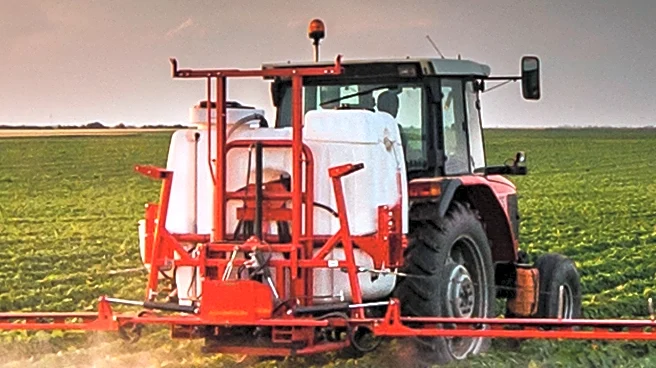What's Happening?
Recent research published in the journal mBio has identified a significant link between meat consumption and urinary tract infections (UTIs). The study analyzed over 5,700 E.coli specimens from UTI patients and compared them with meat samples from local
stores. The findings revealed that 18% of UTIs were associated with E.coli strains originating from meat, particularly chicken and turkey, which accounted for 38% and 36% of these infections, respectively. Beef and pork were also implicated, with 14% and 12% of infections linked to these meats. The study highlights the role of cross-contamination during the slaughtering process as a key factor in the spread of E.coli from animals to humans.
Why It's Important?
The study underscores a critical public health issue, as UTIs are a common and painful condition affecting millions annually. The revelation that a significant portion of these infections may be foodborne suggests a need for improved food safety measures. This is particularly pressing for low-income communities, where the risk of foodborne UTIs is 60% higher. The findings could prompt regulatory bodies to enforce stricter controls on meat processing and handling to reduce contamination risks. Additionally, consumers may need to adopt safer meat handling and cooking practices to mitigate their risk of infection.
What's Next?
In response to these findings, there may be increased pressure on the meat industry to enhance safety protocols and reduce contamination risks. Public health campaigns could be launched to educate consumers on safe meat handling and cooking practices. Researchers may also continue to explore the link between foodborne pathogens and other health conditions, potentially leading to broader food safety reforms. Policymakers might consider implementing stricter regulations on meat processing to protect public health.
Beyond the Headlines
The study raises ethical and legal questions about the responsibility of the meat industry in preventing contamination. It also highlights the socio-economic disparities in health risks, as lower-income communities face higher exposure to contaminated meat. This could lead to discussions on equitable access to safe food and the need for targeted interventions in vulnerable populations.













